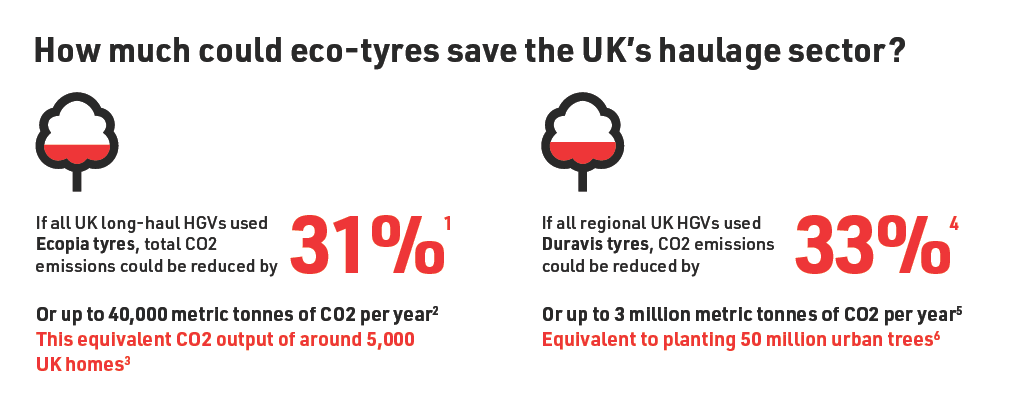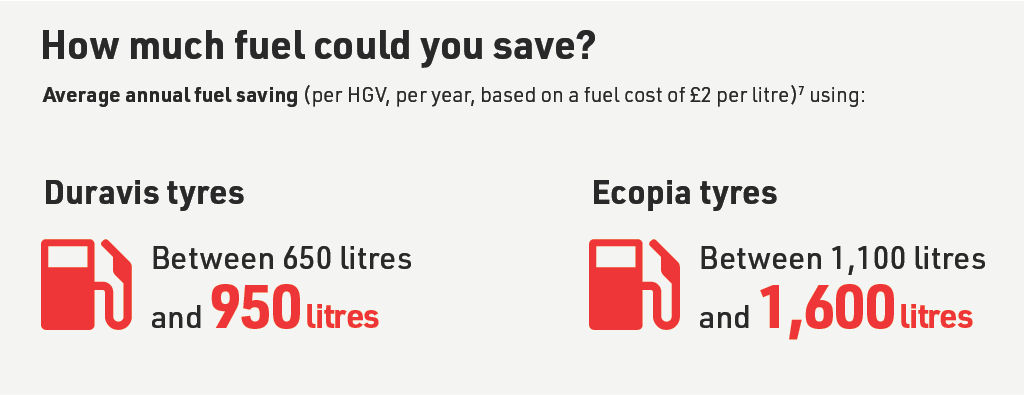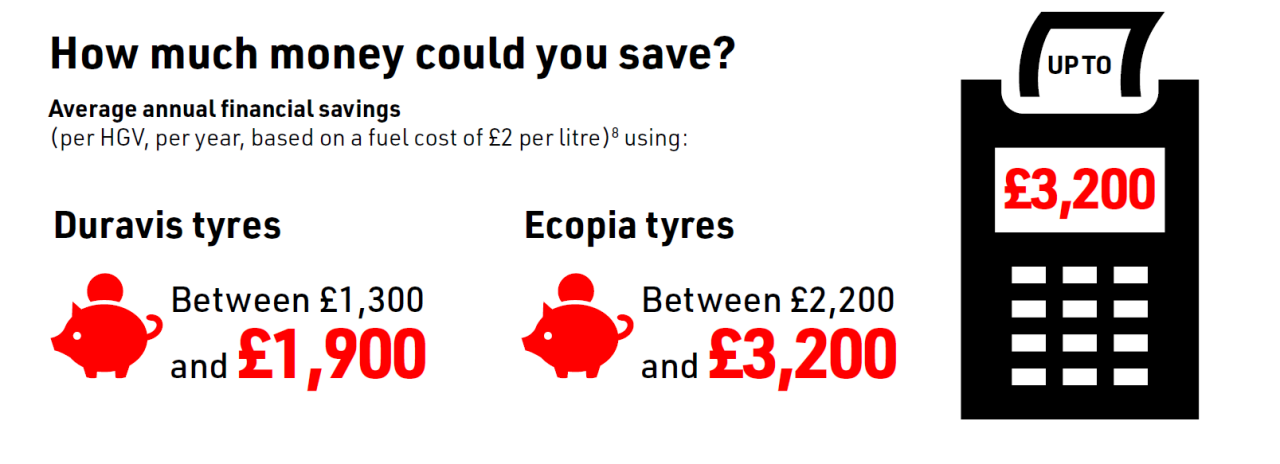What would the environmental – and financial – impact be if all heavy goods vehicles in the UK switched to high performance tyres, engineered with low rolling resistance to reduce fuel consumption and carbon emissions?
Bridgestone teamed up with Coventry University to calculate the saving that could be realised if regional and long-haul fleets switched from standard class D tyres to Bridgestone Duravis (EU label grade: B class) and Ecopia (EU label grade: A class) tyres respectively.
Duravis and Ecopia tyres have been engineered to achieve lower RRC (Rolling Resistance Coefficients) than class D tyres, which means reduced energy loss, fuel consumption, and CO2 output.



